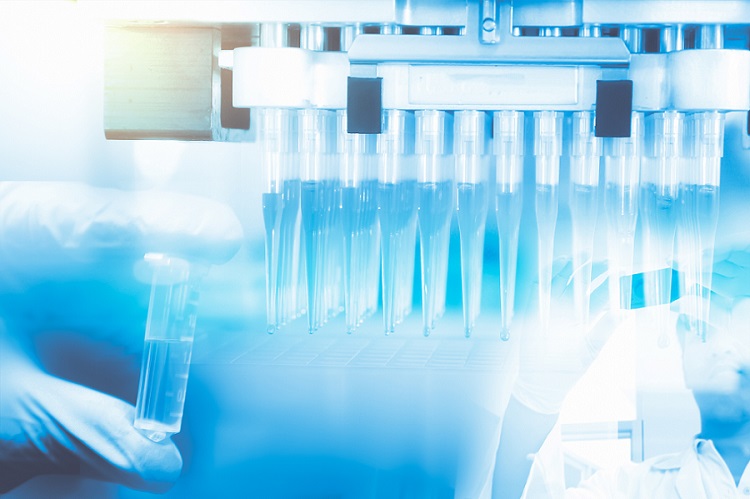Instrumentation is the mainstay industry in manufacturing development, providing an effective guarantee for the development of cutting-edge industries. As an important part of the instrumentation industry, analytical instruments play an important role in the analysis and detection business and become a weapon for safety testing.
According to industry figures, hot fields such as environmental protection construction, food safety, medical research, and scientific exploration will generate more potential market demand. In the past year, how the various branches of analytical instruments have developed? Let's take a look:
Raman Spectroscopy
With the introduction of a large number of support policies, Raman spectroscopy has gradually been moved from the laboratory to the market. Various universities and research institutes have begun to bring their own Raman spectroscopy technology to the market, and more exposure is under the spotlight. The application of Raman spectroscopy is mainly distributed in the fields of pharmaceutical, security, food, life science, catalysis, etc.
Terahertz
Terahertz technology, a particularly important cutting-edge technology, is a band in a special frequency range. At present, it is widely used in many fields such as mobile broadband communication, non-destructive industrial testing, food safety inspections, medical and biological imaging. The proliferation of industry competitors and the rapid development of technology indicate that it has grown into a major part of the molecular spectrum market. Terahertz waves have very important academic and application value. In the future, this technology has broad application prospects in the fields of material molecules, spectroscopy, materials science, biology, medical imaging, and environmental science. According to Research and Markets, the market will reach 288.77 million US dollars in 2020, with a compound annual growth rate of 32.68%.
Gas Chromatography
With the continuous development of gas chromatography technology, gas chromatography is becoming more and more popular as an efficient, fast and sensitive analytical instrument. It plays an increasingly important role in petroleum, chemical, biochemical, pharmaceutical, food, environmental protection
Thin-Layer Chromatography(TLC)
Thin layer chromatography is a chromatographic separation technique that separates, identifies, and quantitied mixed samples. Compared to other chromatographic techniques, thin-layer chromatography is currently utilized mainly in the field of traditional Chinese medicine analysis. Each technology is constantly developing new applications, and TLC technology is gradually showing its uniqueness in food, poison, and environmental inspection. According to experts, on the whole,80% of TLC technology is concentrated in the field of traditional Chinese medicine analysis, and the remaining food, environment, toxicology analysis and life sciences account for about 20%.
Liquid Chromatography-MassSpectrometry (LC-MS)
With the development of technology, the standard for instruments in the field of analysis continues to be raised. The LC-MS combines the liquid chromatograph to effectively separate the thermal instability and the separation ability of high-boiling compounds and the strong component identification ability of the mass spectrometer. It is an excellent way for the analysis of trace organic mixtures.
Semiconductor Laser
Semiconductor lasers are a class of lasers with early maturity and rapid progress. Relying on the advantages of good directivity, high brightness, good monochromaticity, and high energy density, semiconductor laser equipment is widely used in industrial production, communication, information processing, medical and health, military, cultural education and scientific research.
Elemental Analyzer
As a laboratory routine instrument, the elemental analyzer can simultaneously quantitatively determine the content of C, H, N, S, and elements in organic solids, highly volatile and sensitive substances, and plays an important role in studying the organic materials and organic compounds. Widely utilized in chemical and pharmaceutical products, biology, environmental protection, medicine and other related fields,
Sample Pretreatment
According to statistics results, the time spent on sample pretreatment often accounts for 60% of the entire experimental process, which greatly affects the efficiency of the experiment. At present, some laboratories have begun to use automated instruments to improve the efficiency of pretreatment, to meet the large-volume automatic processing of samples, and to speed up the processing and improve the processing quality. In recent years, the analytical instrument industry has gradually recognized the importance and development prospects of sample pretreatment and developed many new techniques and instruments for sample pretreatment based on new principles or improvements in traditional techniques.
This era is an era of cross-industry and capital, and the analytical instrument industry has never lacked opportunities. How to be able to follow the trend at any time and develop with the trend is the common pursuit of instrument companies. Analytical instrument manufacturers can only find more valuable technological innovations by tapping market demand, investing more energy in technology research, and future development will become more competitive.
